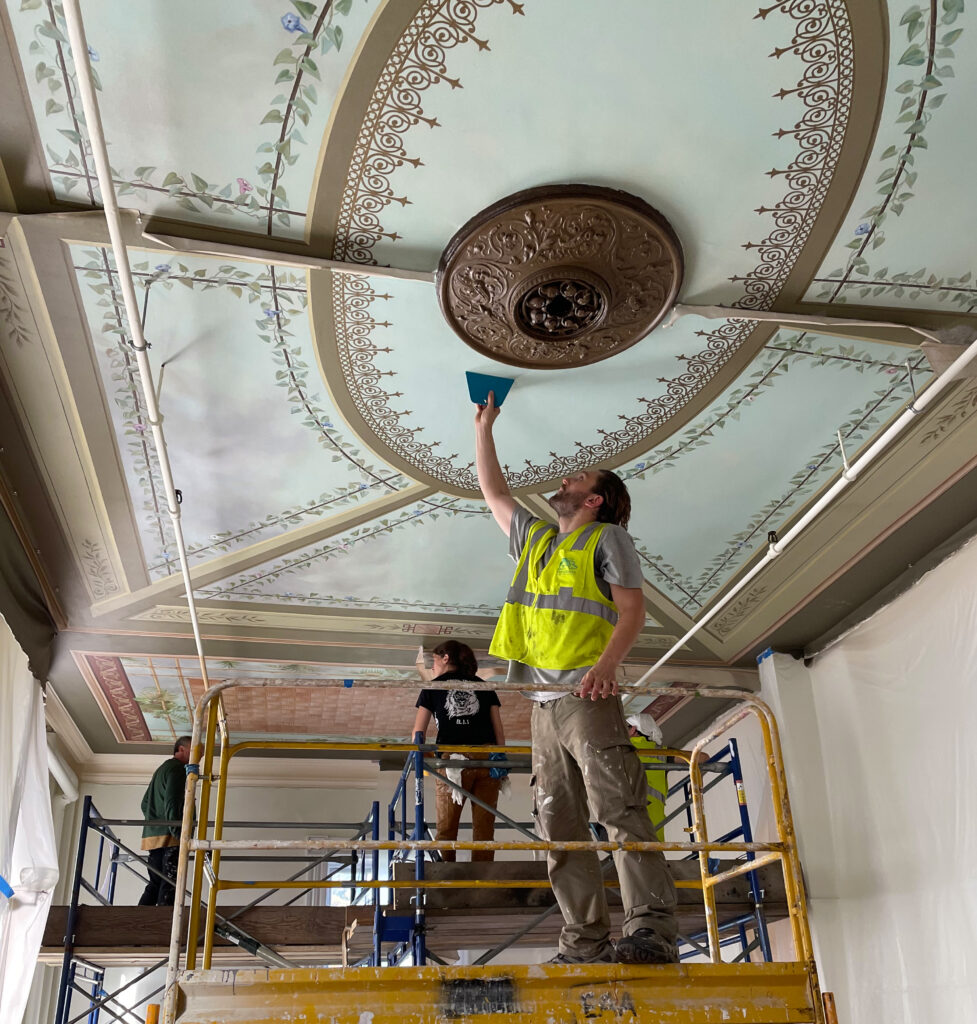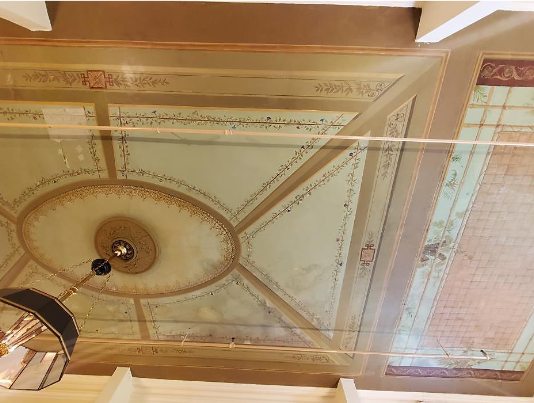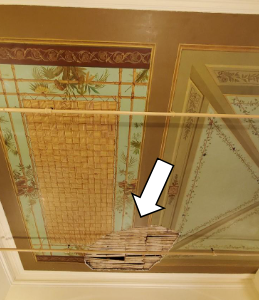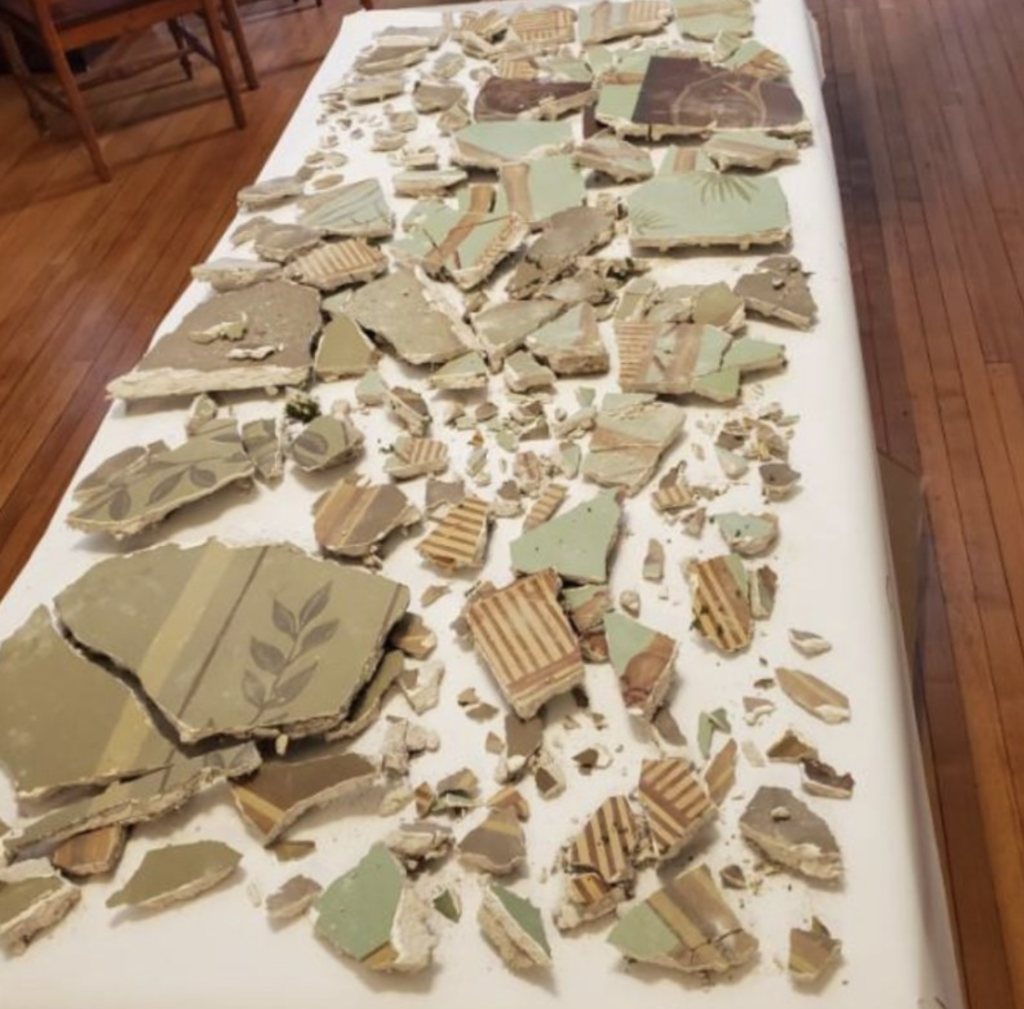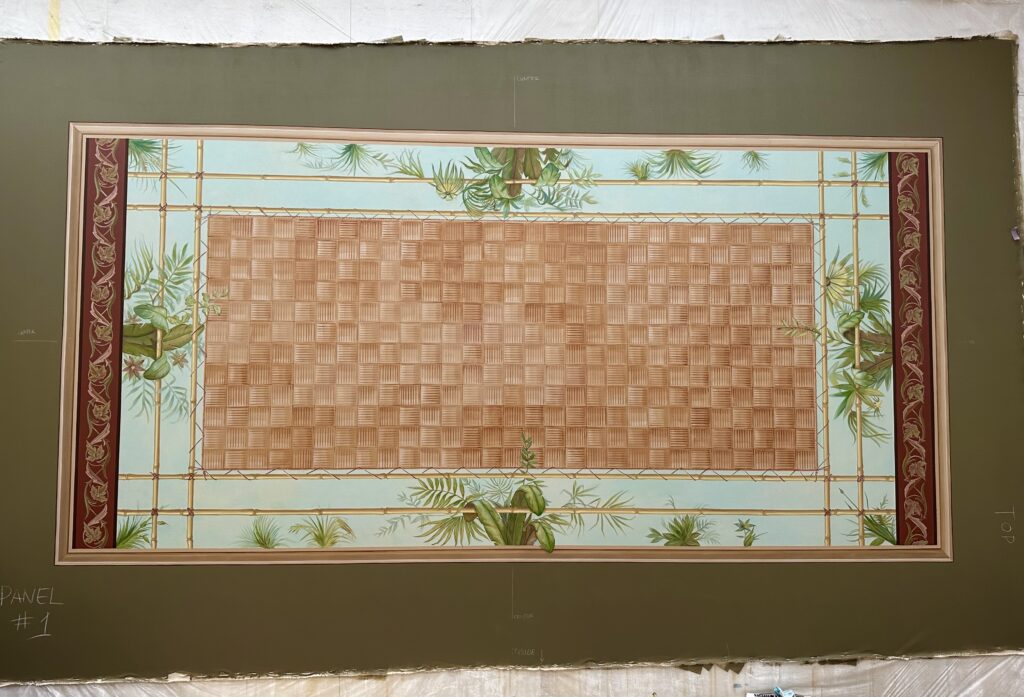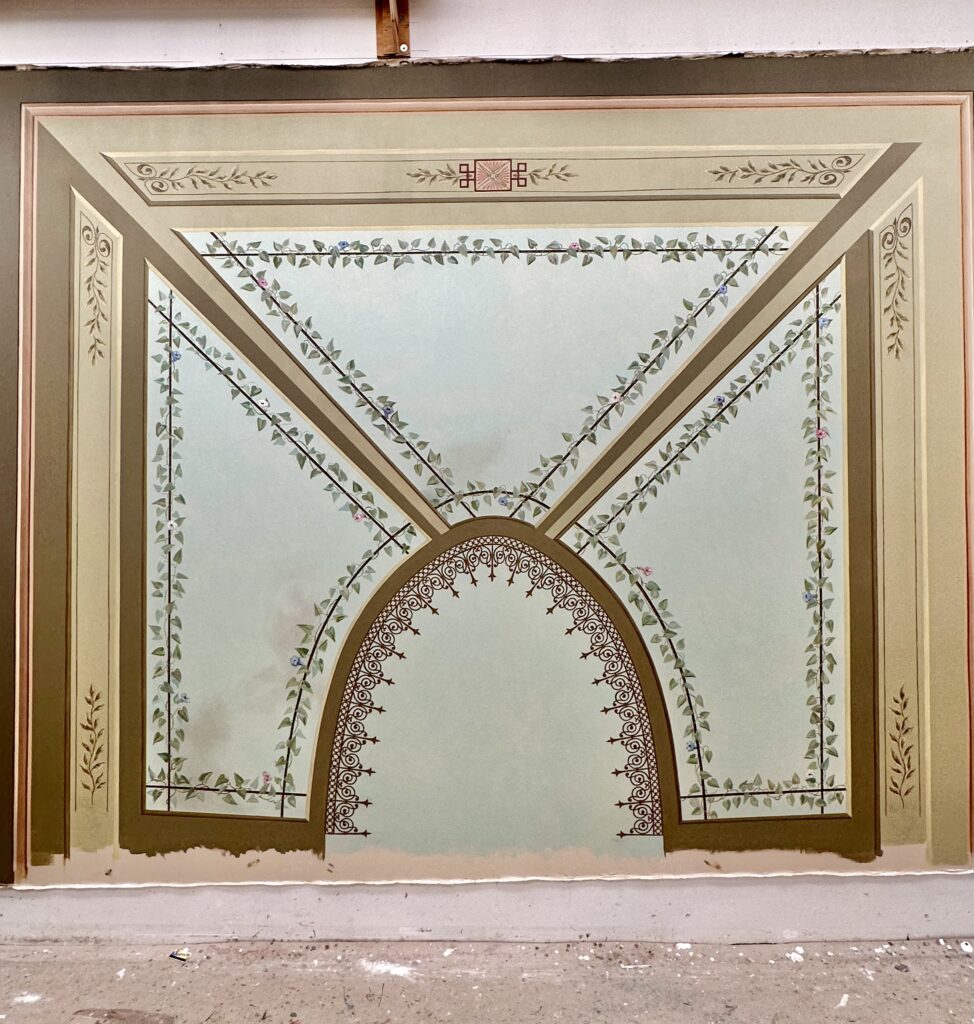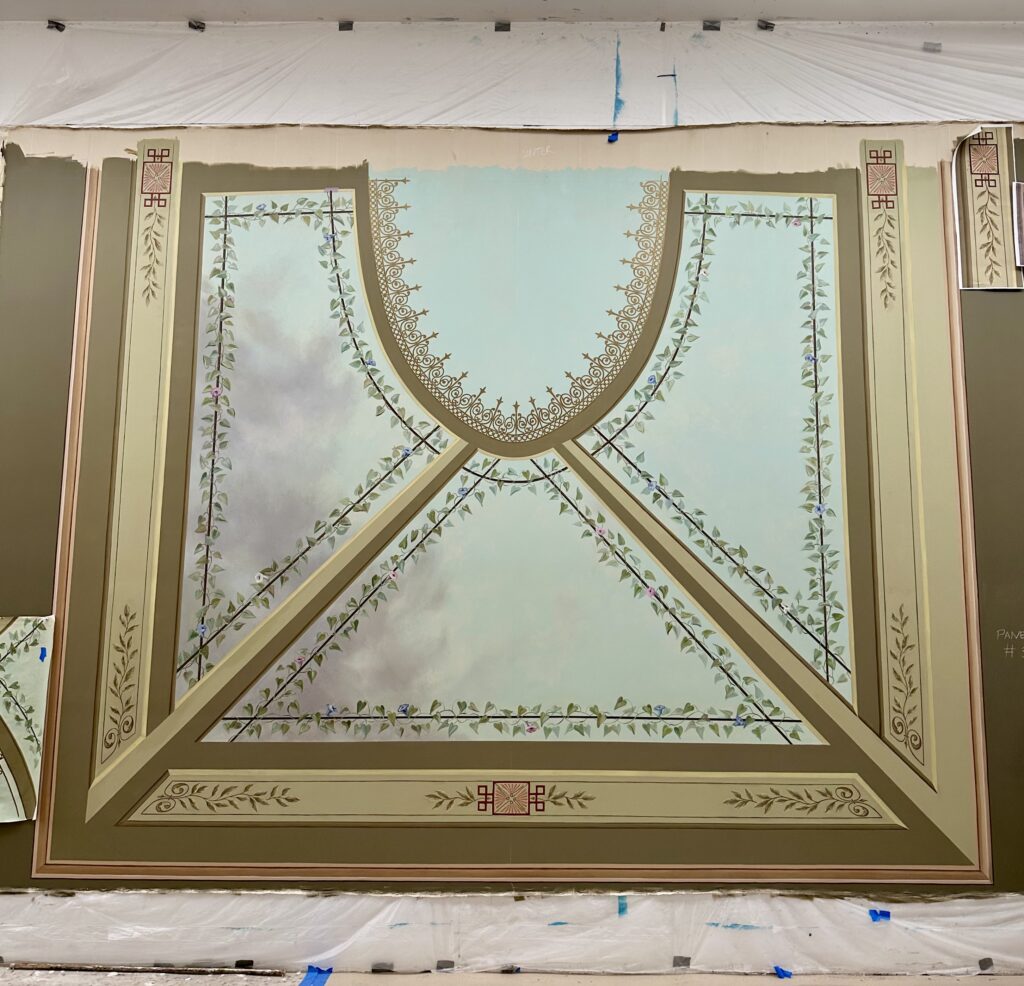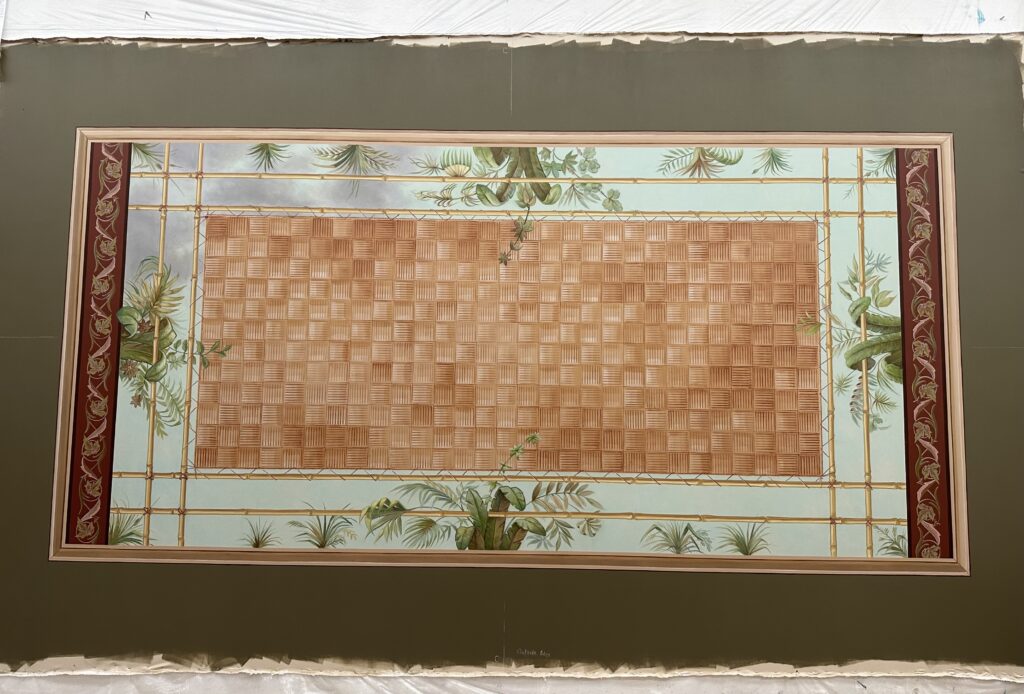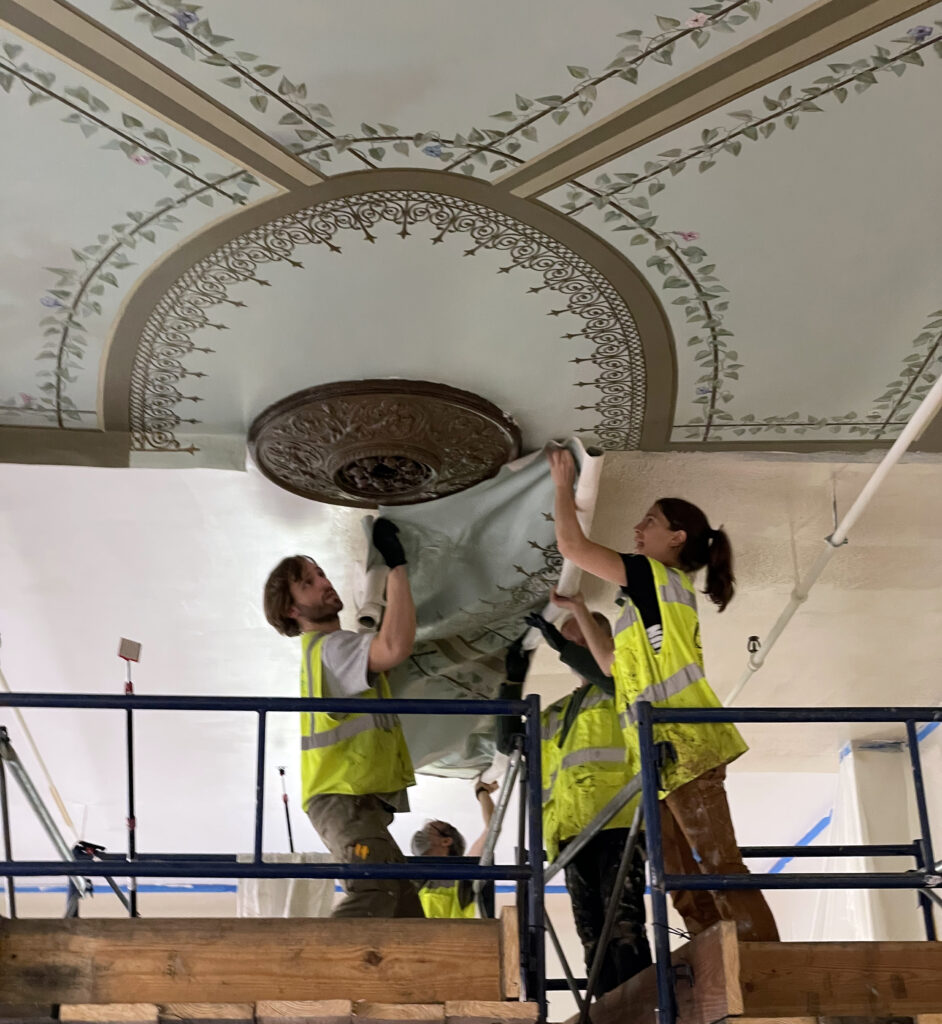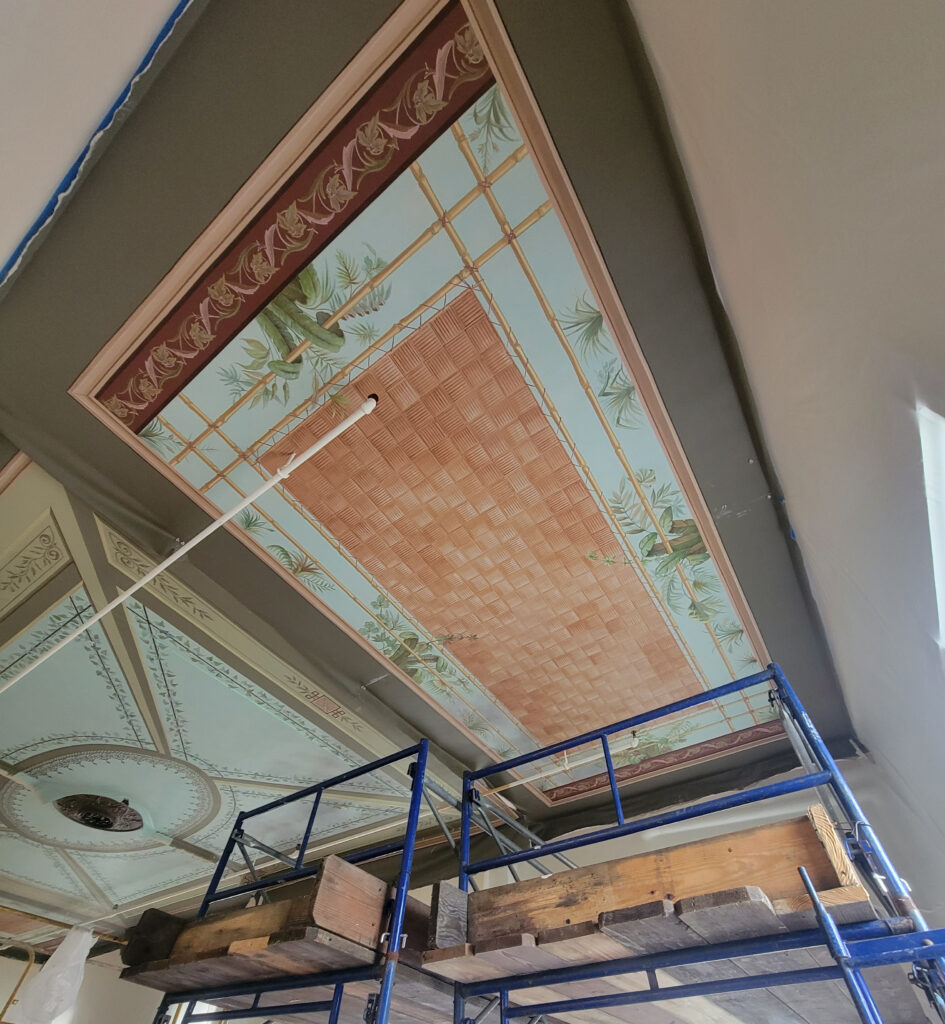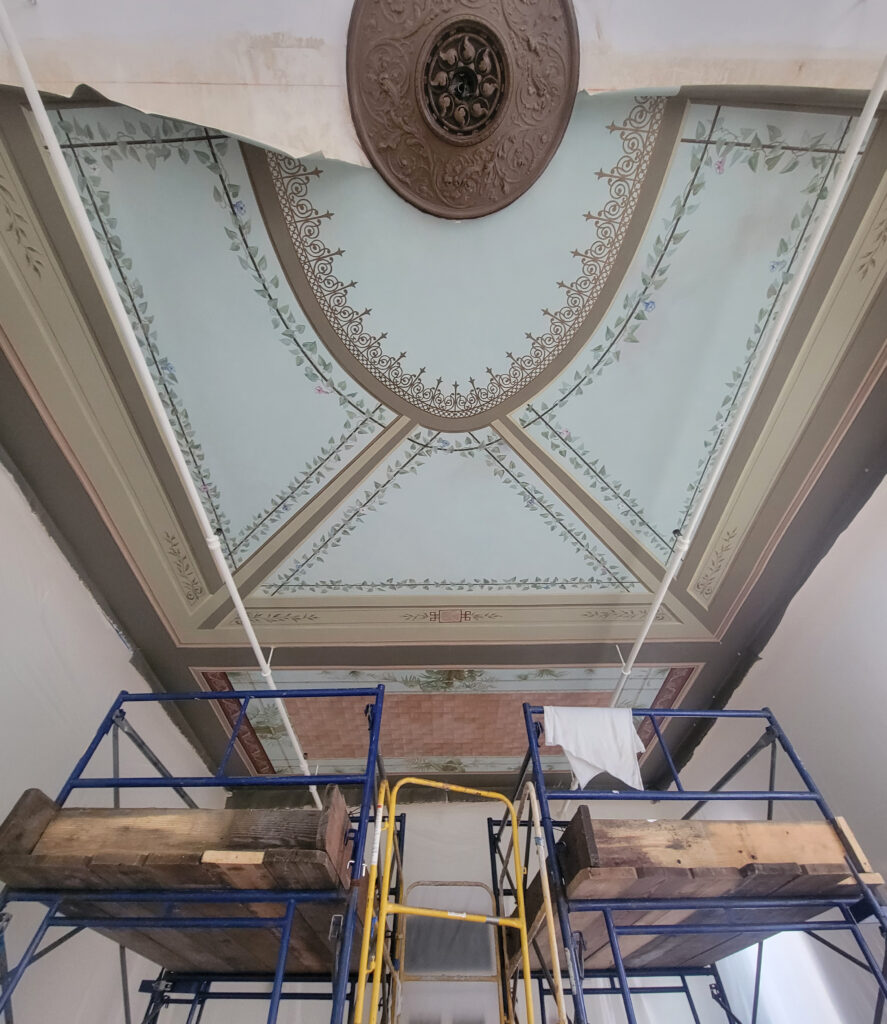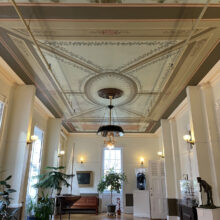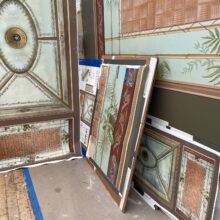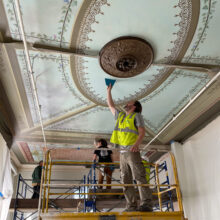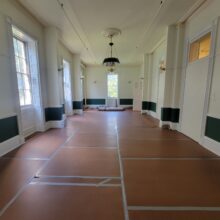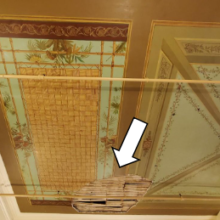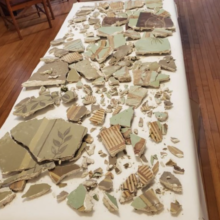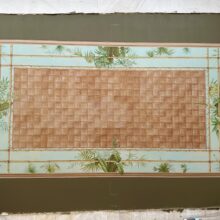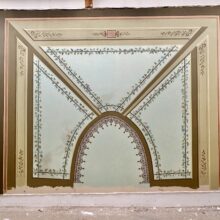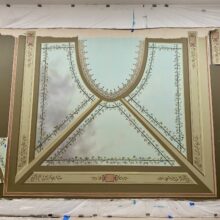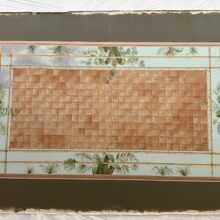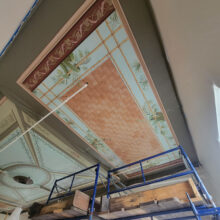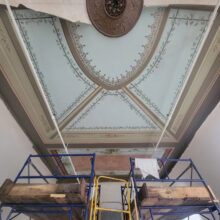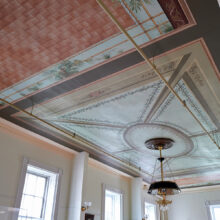The Noble Maritime Collection - Writing Room Ceiling
The Noble Maritime Collection is known for the grassroots adaptive reuse project led by the volunteer Noble Crew during the 1990s, which rehabilitated the National Historic Landmark Building D, a former Sailors’ Snug Harbor dormitory from 1844, and turned it into the museum’s new home. The Writing Room is an original feature of the building—a large, sunlit common area on the first floor, just next to the front entrance, where sailors once gathered to write correspondence. While restoring the room, the Noble Crew discovered, under decades of paint layers and plaster patches, a Victorian trompe l’oeil ceiling mural, and its restoration was a crowning achievement of the rehabilitation of Building D.
The mural was originally commissioned by Sailors’ Snug Harbor around 1883 in celebration of the retirement home’s 50th anniversary. It depicted a glasshouse roof suggesting the South Seas, where many of the resident mariners had sailed.
Phase I: Conservation Conditions Assessment, Survey, & Documentation
Unfortunately, in July 2020 during a thunderstorm, a portion of the ceiling collapsed. With a generous emergency grant from the New York Landmarks Conservancy, the museum engaged EverGreene Architectural Arts to assess the condition of the ceiling. Our conservators determined that deterioration of the plaster and failure of plaster keys among other factors lead to the collapse of the ceiling that was built in the 1840s. The existing ceiling framing was no longer sound and also needed to be replaced.
In 2021, the Noble Maritime Collection contracted our team to return and document the mural, which included a full photogrammetric digital scan and a historic paint analysis, so that one day it could be restored. The museum then contracted the Staten Island firm Simply Built to remove the original ceiling and put up a new one that was finished to EverGreene’s specifications to restore the mural. With great skill, Simply Built was able to salvage the room’s original plaster crown molding from the 1840s.
Phase II: Mural Recreation
Our Design Studio prepared the design documents to recreate the original mural using the information from the original mural design, color palette, and hand-painting techniques from the conservation report. Salvaged fragments of the original also informed the hand-painting techniques so our artists could create prototypes to build out this large-scale recreation.
After approval of artwork, our artists hand-painted the design onto archival-quality canvas onsite in our Brooklyn Mural Studio, starting with a mockup that was then reviewed and certified with the Noble Maritime Collection Museum. Once the mural was completed and approved, the on-site work for the installation in the Writing Room occured. The canvas was adhered to the ceiling in sections and the seams touched up to ensure the mural is completely smooth and harmonious.
Phase III: On-site Installation
Our craftspeople worked together on-site to install the canvas to the ceiling in four large sections, ensuring the mural looks completely smooth and harmonious, like it had been there all along.


